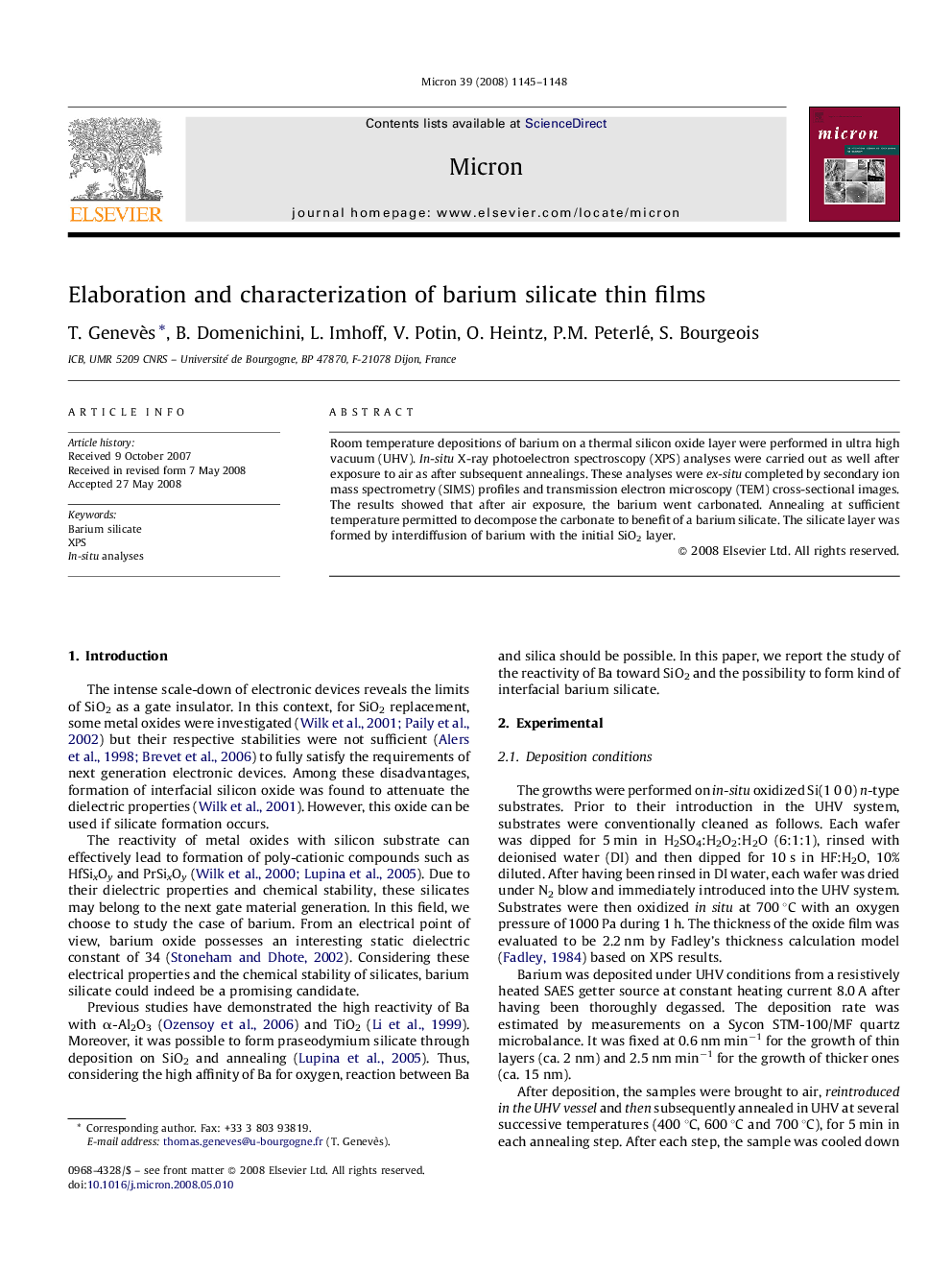| Article ID | Journal | Published Year | Pages | File Type |
|---|---|---|---|---|
| 1589681 | Micron | 2008 | 4 Pages |
Abstract
Room temperature depositions of barium on a thermal silicon oxide layer were performed in ultra high vacuum (UHV). In-situ X-ray photoelectron spectroscopy (XPS) analyses were carried out as well after exposure to air as after subsequent annealings. These analyses were ex-situ completed by secondary ion mass spectrometry (SIMS) profiles and transmission electron microscopy (TEM) cross-sectional images. The results showed that after air exposure, the barium went carbonated. Annealing at sufficient temperature permitted to decompose the carbonate to benefit of a barium silicate. The silicate layer was formed by interdiffusion of barium with the initial SiO2 layer.
Keywords
Related Topics
Physical Sciences and Engineering
Materials Science
Materials Science (General)
Authors
T. Genevès, B. Domenichini, L. Imhoff, V. Potin, O. Heintz, P.M. Peterlé, S. Bourgeois,
